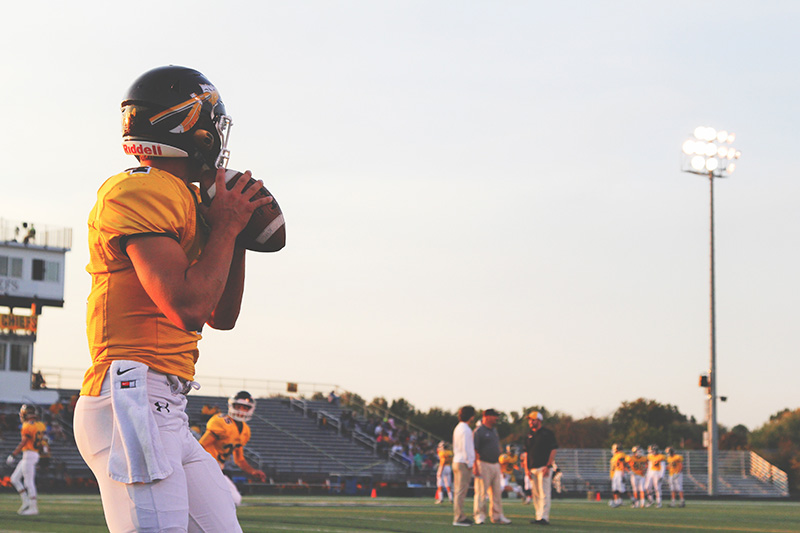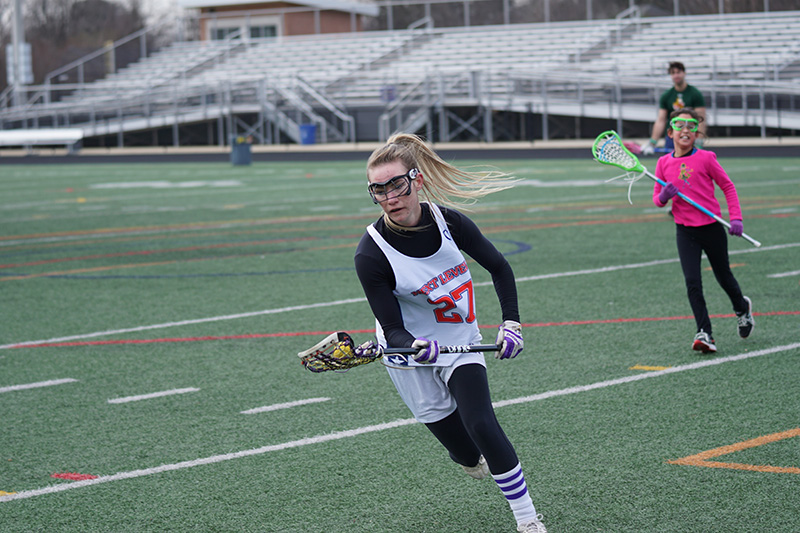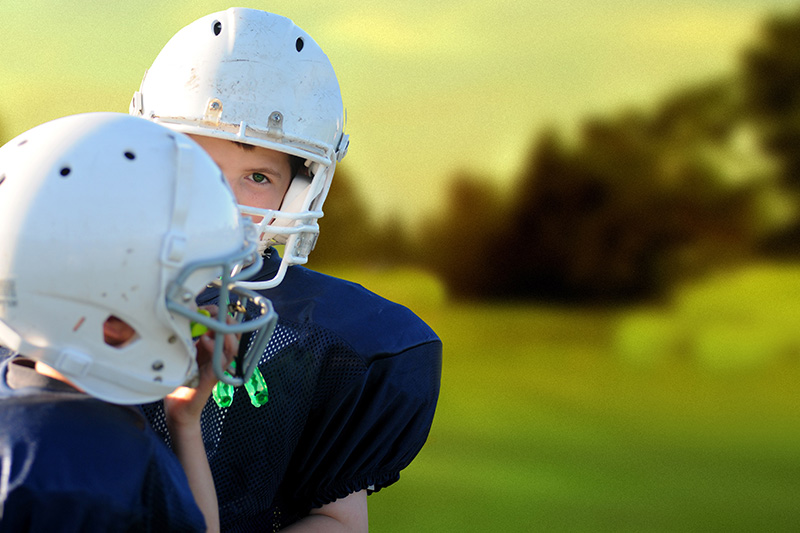Yet another school year is well on its way. Students in the Toledo area and across the country are getting back into the swing of things — and we’re not just talking homework.
For 3 out of 4 American families with school-aged kids, at least 1 child plays an organized sport. That’s nearly 45 million kids!
But with all that fun comes some safety risk.
Most injuries that happen to school-aged kids occur while playing sports. The 40,000 sports-related eye injuries happening every year lead to nearly 100,000 doctor visits annually, costing upwards of $175 million. On top of that, eye injuries are the leading cause of blindness in children in the U.S.
Sports and eye safety: What do you really know?
So protecting your eyes is important. But what do you really know about eye safety?
Sports + Eye Safety Quiz
Take a look at these sports eye safety statements and see if you can tell: True or False?
1. Most sports eye injuries can be prevented using the correct protective eyewear.
2. Racquet sports are considered one of the high-risk sports for eye injuries.
3. A “black eye” is usually a medical emergency.
4. You should talk with your healthcare provider before signing up for a sport.
5. If you don’t have protective eyewear, you can wear a sturdy pair of sunglasses instead.
6. A player who has an eye injury should return to play only when an eye doctor gives his or her OK.
7. You should wear swimming goggles wherever you swim.

Quiz Answers
Okay, let’s see how you did on the sports and eye safety quiz!
1. TRUE
2. TRUE
3. FALSE
4. TRUE
5. FALSE
6. TRUE
7. TRUE
How’d you do?
If you’re feeling that you might have some room for improving your understanding of eye safety when it comes to sports, you’re in luck! It’s possible, even easy, to prevent sports eye injuries if you learn how.
(Quiz adapted from Stanford Children’s Health.)
Preventing sports eye injuries — easier than you think
The good news is that 90% of those yearly eye injuries mentioned above are completely preventable by wearing the right protective eyewear.
The Vision Council has provided a number of essential tips that will help youth protect their eyes. Here are a few we thought you should see:
- “All children need protective eyewear regardless of whether or not they wear glasses or contacts.”
- “All sports protective eyewear should meet the impact standards of the American Standards for Testing and Materials (ASTM). An optometrist can make sure that glasses and/or goggles are fitted properly.”
- “Everyday fashion eyewear is not held to the same protective standards as eyewear products labeled as protective eyewear for sport use. The lens in a child’s regular eyeglasses could easily pop out and puncture or cut the eye. A frame mangled from impact could also injure the eyes and ocular region of the face.”
- “Just because a sport requires a helmet or face guard, it doesn’t mean that your child’s eyes are protected from injuries. They are still exposed to danger from sports equipment or an opponent’s fingers penetrating the openings of a face mask.”
- Protective eyewear can be purchased at sporting goods stores as well as eye care professionals’ offices.
Are you beginning to see why protective eyewear is no game?
No matter what sport or physical activities your young ones are getting into this year, make sure they’re using the appropriate type of eye protection for safe fun.
Read on for an overview of eye safety for sports.
Risks of eye injury while playing sports
High-risk sports
Most sports-related eye injuries for any age group happen when playing basketball, baseball or racquetball. Sports like boxing, martial arts and hockey are also high-risk sports.
Moderate- and low-risk sports
Some moderate-risk sports include golf, soccer and tennis, while low-risk sports include cycling and swimming. Sports like gymnastics or track and field are considered safe, meaning there’s a very low risk of eye injury.

Make sure protective eyewear is sport-specific
Wearing the appropriate kind of eye protection during these sports is the best way to limit eye injury, but — surprisingly — most sports leagues for kids don’t require eye protection use, even though doing so greatly reduces injury risk.
(If your kids’ school or league doesn’t require protective eyewear, consider having a talk with coaches, administration and other parents!)
And keep in mind: Regular glass lenses or contact lenses will not provide adequate protection. Using protective eyewear, such as ultra-strong polycarbonate lenses, as well as helmets with polycarbonate face masks, is the best way to lower the chances of sustaining harm to the eyes.
In fact, polycarbonate is 10x more impact-resistant than other materials, and if your child needs vision-correcting eyewear, you can easily get safe eyewear made out of this tough plastic with lenses that fit your prescription.
Outdoor sports without specific protective eyewear
For outdoor sports or physical activities that don’t require specific protective eyewear, protecting your peepers from the sun is still extra important. Don’t forget to wear sunglasses that
- Block 99–100% UV rays
- Reduce glare
- Fit comfortably
You can also check out our blog about protecting your eyes in the summer to learn more.
And, with winter always around the corner from fall, why don’t you check out our blog “5 Tips for Better Winter Eye Health”?
Enjoying this article?
Get more like this sent to your inbox!
Think outside just “sports”
Did you know? Eye protection isn’t just for the kids.
And this is beyond just workplace eye health and safety (though that’s super important, too!)
Chances are, you parents out there will participate in some kind of physical activities and sports — perhaps even with the kids. So that’s why it’s important for adults to wear appropriate protective eyewear as well.
Not only will it provide protection, but it also sets a great example for how to exercise caution when you’re having sports-related fun.
If you’re interested in brushing up on how to keep your eyes healthy, take a look at these “14 Vital Healthy Vision Facts You Should Know.” A few minutes of learning could help you add years of healthy vision to your life!

Perrysburg Eye Center: Here to make eye care simple.
If you’re in Northwest Ohio and you’ve got children in need of protective or vision-correcting sports eyewear, visit our Optical Shop. We’ve got a variety of prescription sports goggles and glasses and licensed eye health experts, as well as other tips for your eye safety!New Patients
Get more information about protective eyewear and eye care by calling Perrysburg Eye Center at (419) 874-3125.
Haven’t visited us as a patient yet? Schedule your first visit.
For more articles like these, sign up to our monthly newsletter and follow us on Facebook.
